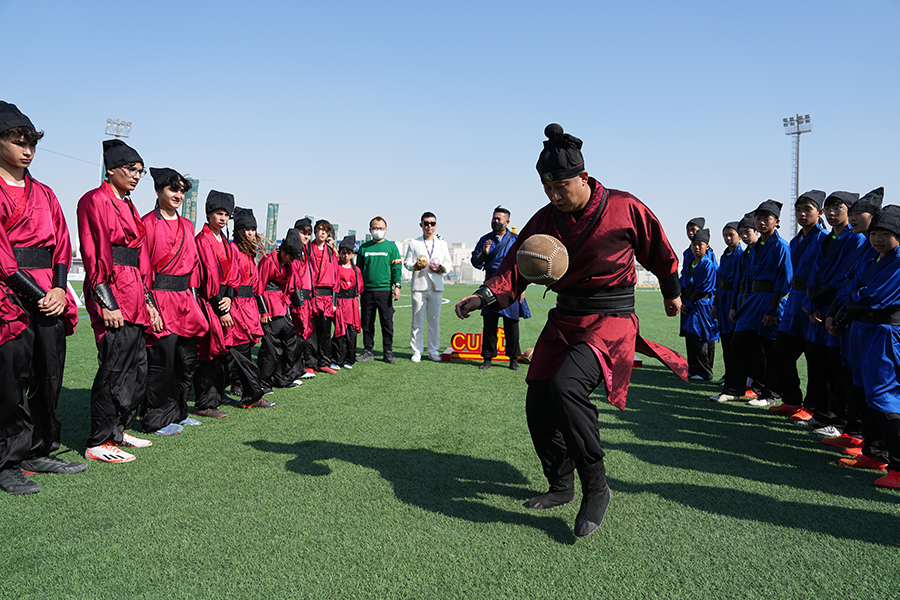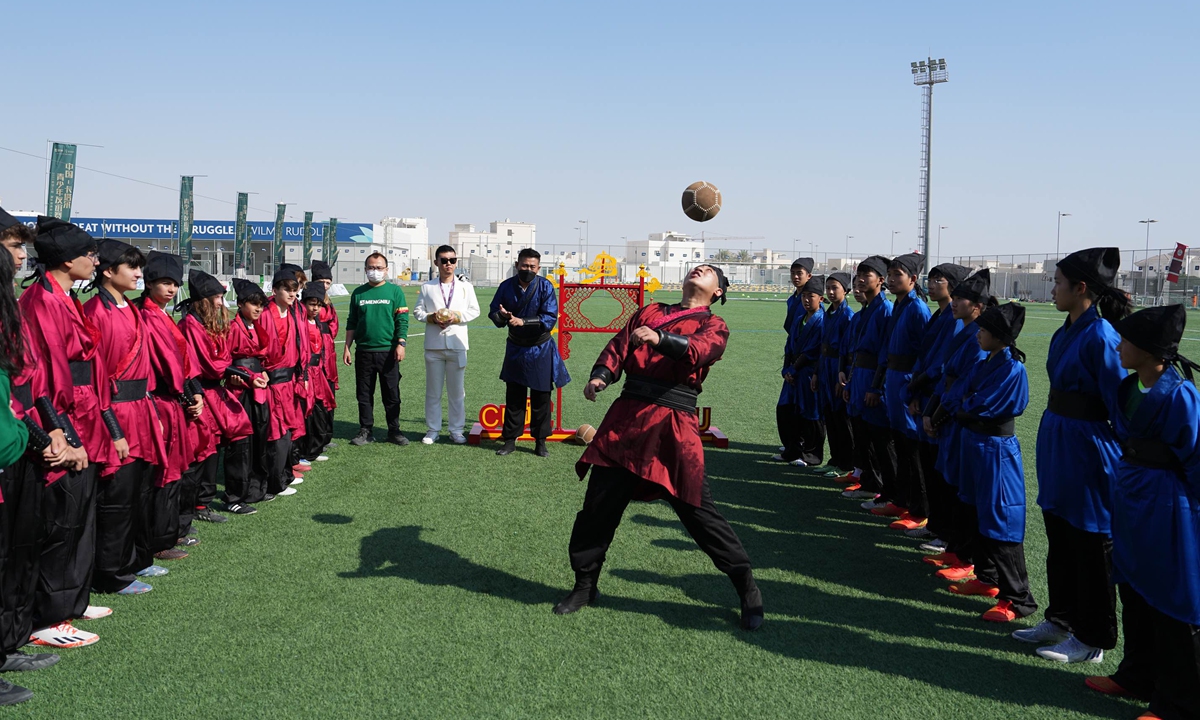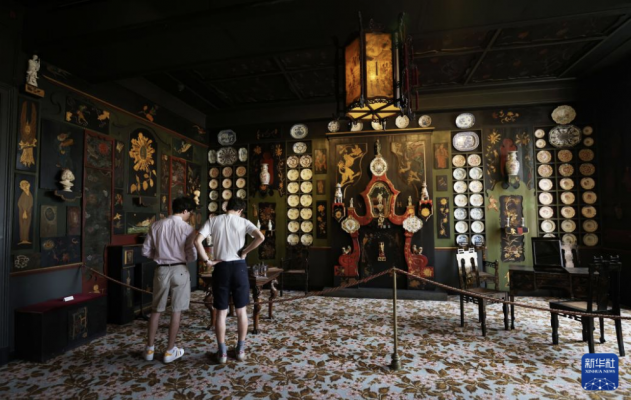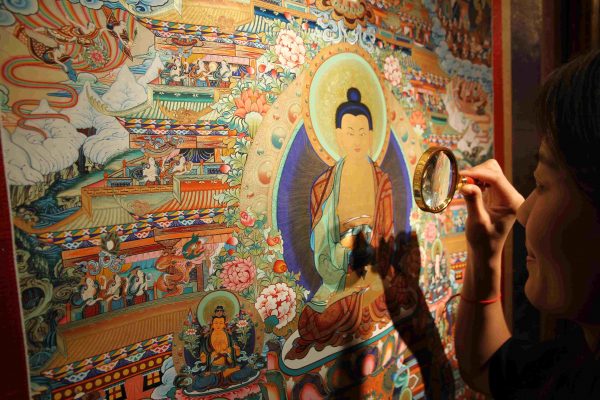One second to think: How well do you know about football? Rules? Teams? World Cup? David Beckham? Lionel Messi? Cristiano Ronaldo?
Not enough. Have you wondered where modern football comes from?

On November 21, right before the tournament of 2022 Qatar World Cup, the China-Qatar Youth Football Exchange and Experience Activity was held at the FIFA Fan Festival in Doha, Qatar. Cuju, part of China’s national Intangible Cultural Heritage (ICH), was presented by Li Weipeng, an inheritor of cuju, telling the story of Chinese culture to the world.
The Long History of Cuju
Dating back to the Warring States period (475-221 BC), cuju was described in the Strategies of the Warring States and the Records of the Grand Historian. These are the first historical references. They refer to the wealthy city of Linzi in the province of Shandong, which was especially known for its love of music, chess and cuju.
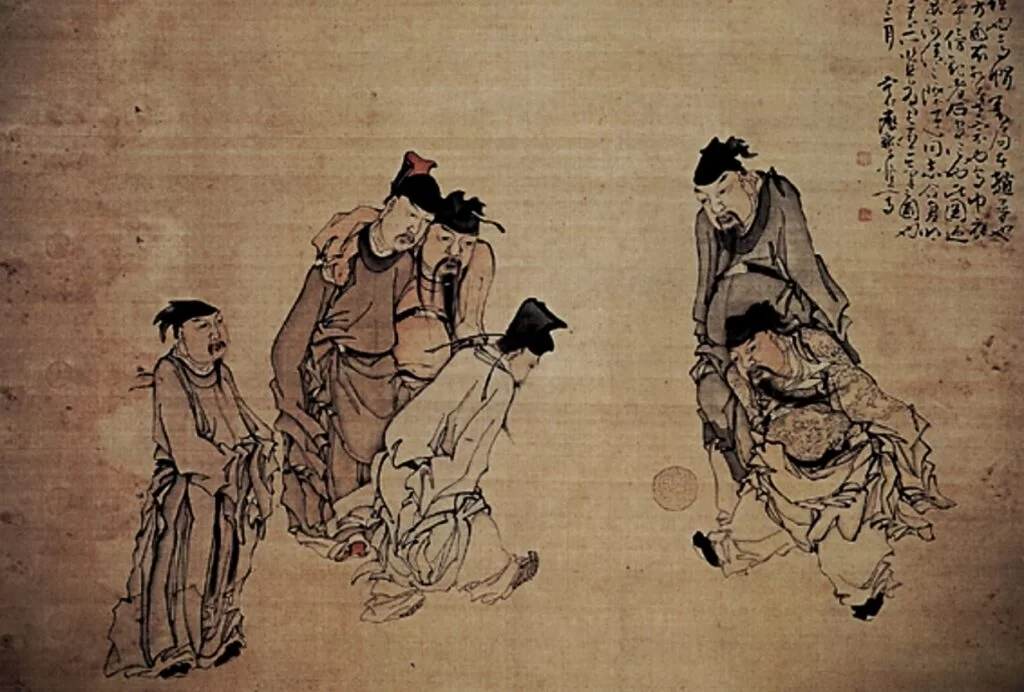
(Photo: Tianjin Museum)
Cuju was originally included as an important part of military training, and had since spread from the army to the royal courts and upper classes, till later as a form of entertainment during the Han Dynasty (206BC-AD220).
During the Tang dynasty (618-907), cuju spreaded to East Asia and Europe, and then developed into modern football in England. The earliest professional cuju organizations, similar to today’s football associations, were set up during the Song Dynasty (960-1279).
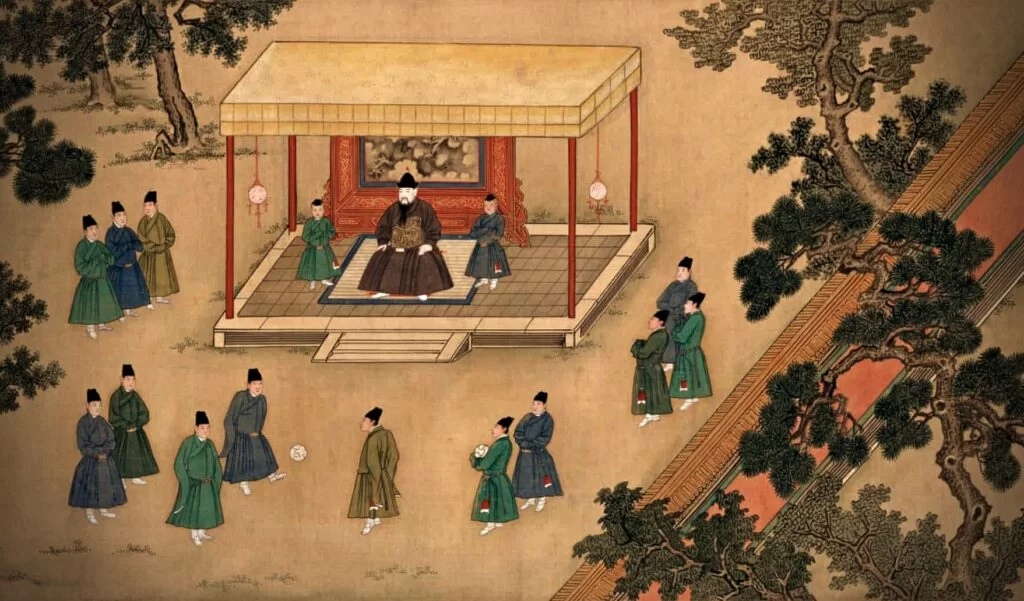
(Photo: Palace Museum)
In 2004, FIFA made it official that Cuju is the earliest form of soccer. The word “cu” means kick literally, whereas “ju” indicates an ancient type of leather ball stuffed with feathers.
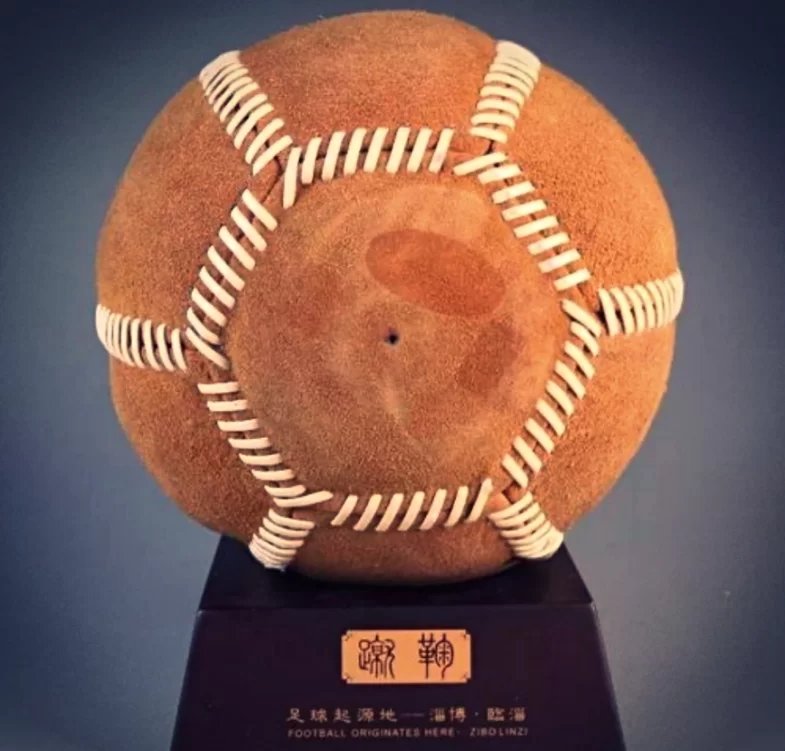
(Photo: China Olympic Committee)
There were two principal styles of cuju: competitive and non-competitive. The latter one, known as baida as well, has the ultimate goal keeping the ball off the ground-level tactfully: guai (ankle kick), deng (heel kick), nian (instep kick) and jian (shoulder kick) and other types of “kick”.
Taking Cuju to The World
“Baida” is the version that Li Weipeng played along during his splendid gig in Qatar. As a seventh-generation inheritor of cuju in China, Li and his team came to Qatar bringing cuju culture to the world.
Li Weipeng plays cuju in Doha, Qatar on November 21, 2022. (Photo: Courtesy of the Network of International Culturalink Entities)
Throughout the past 18 years, Li has been under the laborious training of cuju. Recently, he has traveled overseas to give performances, bringing his techniques and styles to the world’s audience.
During one occasion, young players from China and Qatar changed into traditional Chinese cuju clothing. Under Li’s careful coaching, they experienced the difference between the ancient Chinese sport and modern football.
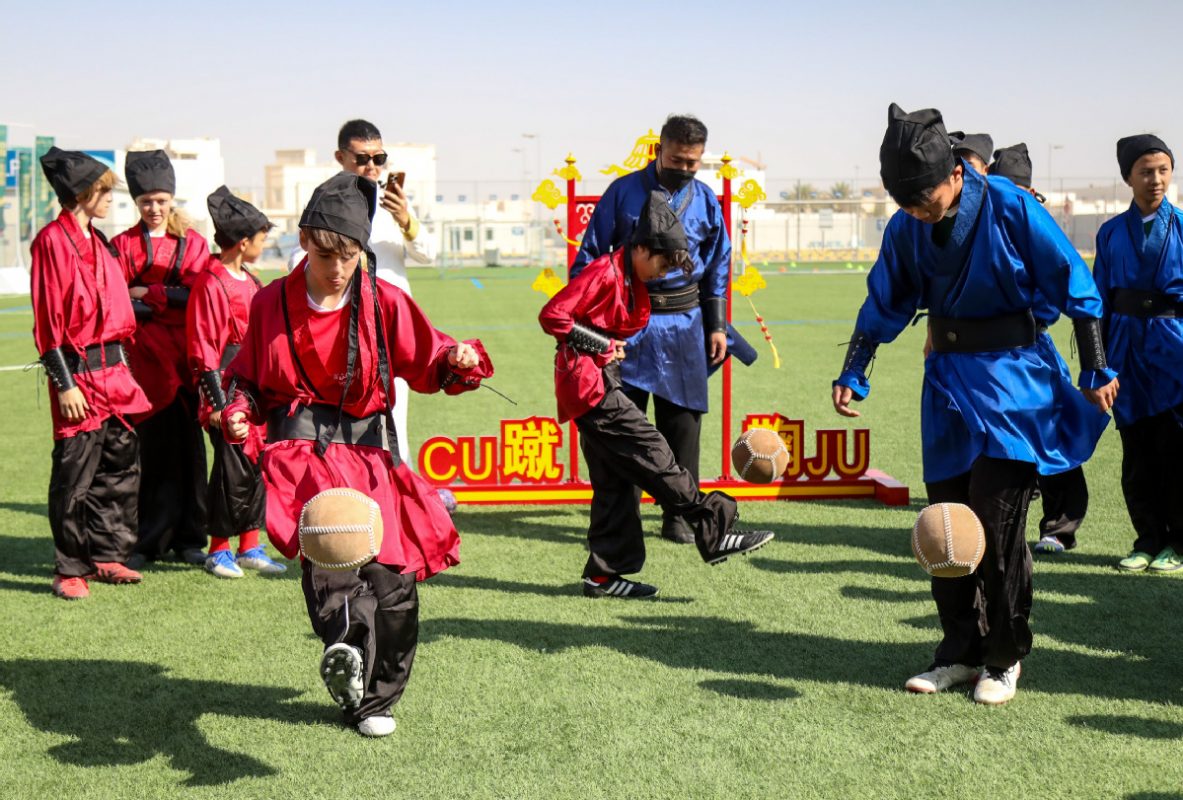
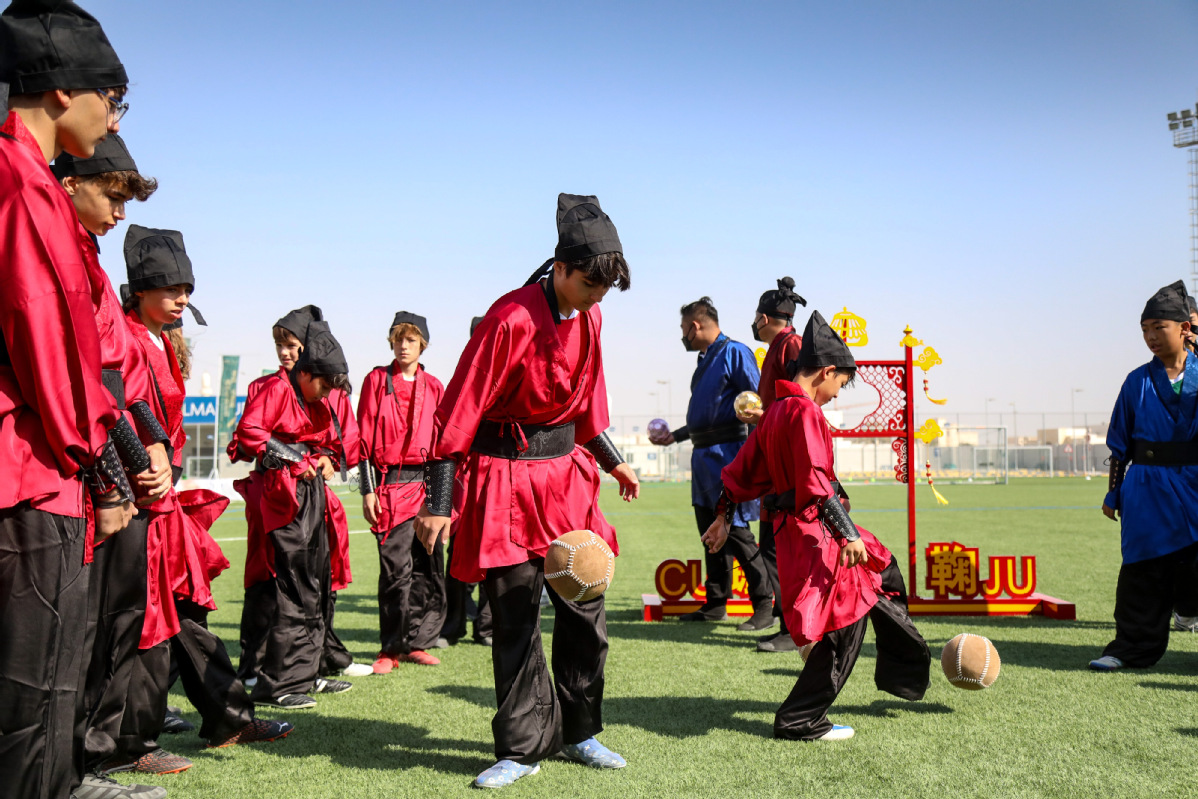
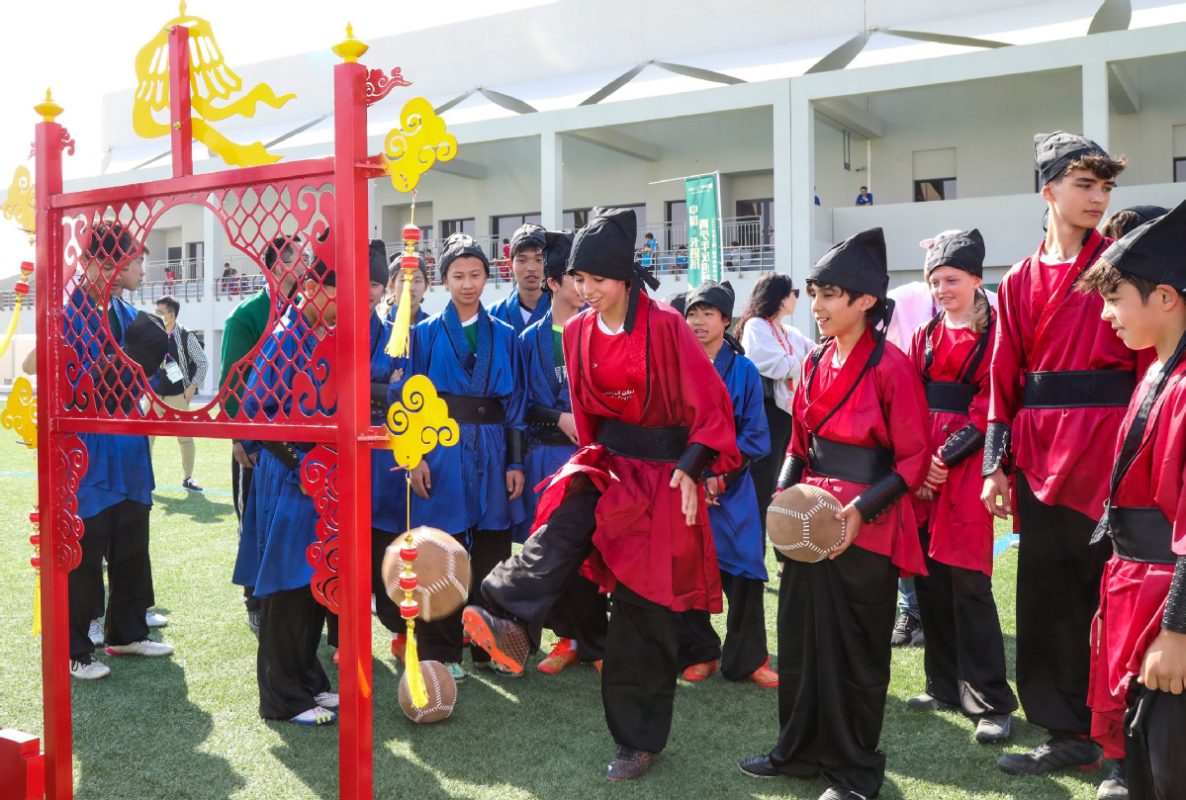
Chinese and Qatari young people played cuju at the activity (Photos: China Daily)
Li was thrilled for the flocks of fans he drew every time.
“They give me thumbs up. Although I did not understand their language, I could feel their strong interest in our traditional Chinese culture through their excited faces and enthusiastic interactions.”
What’s More…
Cuju is not the only ICH that’s won a thumbs-up, there are others.
Based on the “2022 Impact of Intangible Cultural Heritage on Short Video Platforms Overseas” made public by the Culture and Tourism Industry Index Experiment Lab in June this year, view-count of intangible cultural heritage related contents via TikTok has exceeded 30.8 billion, of which martial arts, the Lunar Festival and the Mulan legend took the top 3 positions.

(Photo: China Daily)
ICH, with excellent traditional culture in China at its core, bears witness to the long-standing legacy of Chinese civilization of over 5000 years. As communications between countries continue to increase, more and more foreigners are beginning to understand and learn about China’s intangible cultural heritage.

(Photos: Xinhua)
China’s fan, @joaanclaire from Southeast Asia, introduced a special local custom – “Prosperity Bowl”. The video has received over 4.7 million views and more than 300,000 people have “liked” it, saying they “learned something”.
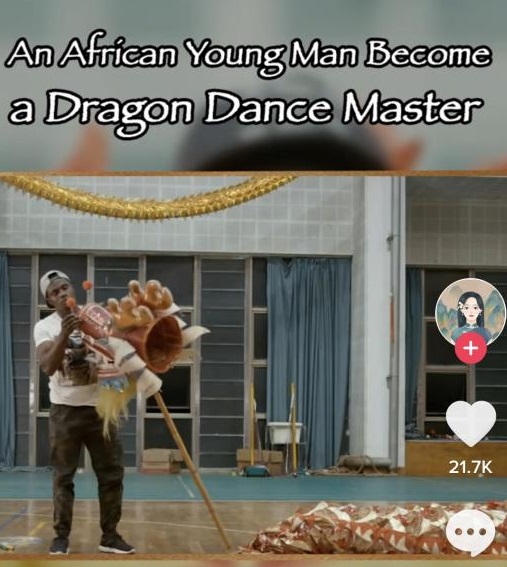
(Photos: Xinhua)
Austin, a foreign student from Togo, won fans from Tik Tok. Austin said he was endeared by his Chinese friends through dragon dance. In response, some netizens believe that hands-on experience is another channel to appreciate culture.

(Photo: Xinhua)
2022 is the Year of Tiger in the Chinese Zodiac. Amaury Guichon, a French pastry Chef made two tigers with chocolate. The video attracted nearly 50 million views!
In the words of Zhou Jian, China’s Ambassador to Qatar, cuju is the open door to allow more people from Qatar to understand Chinese culture and to promote cultural exchanges between China and Qatar. As China’s ICH influences are spreading far and wide, more and more China’s fans worldwide will have the convenience to appreciate the depth, the wealth, and the beauty of China.
There’s one more thing that’s also worthy to mention . In terms of preservation and development of ICH, the study of techniques and the promotion of cultural wisdom should weigh equally. Any ICH that is divorced from its audience will gradually lose its vitality.
Globally speaking, short video is a new form of content. In the most visual way, it erases language barriers, eliminates cultural discounts and breaks down consciousness bias, bestowing ICH with a new life and enabling even more foreigners to understand traditional Chinese culture.

